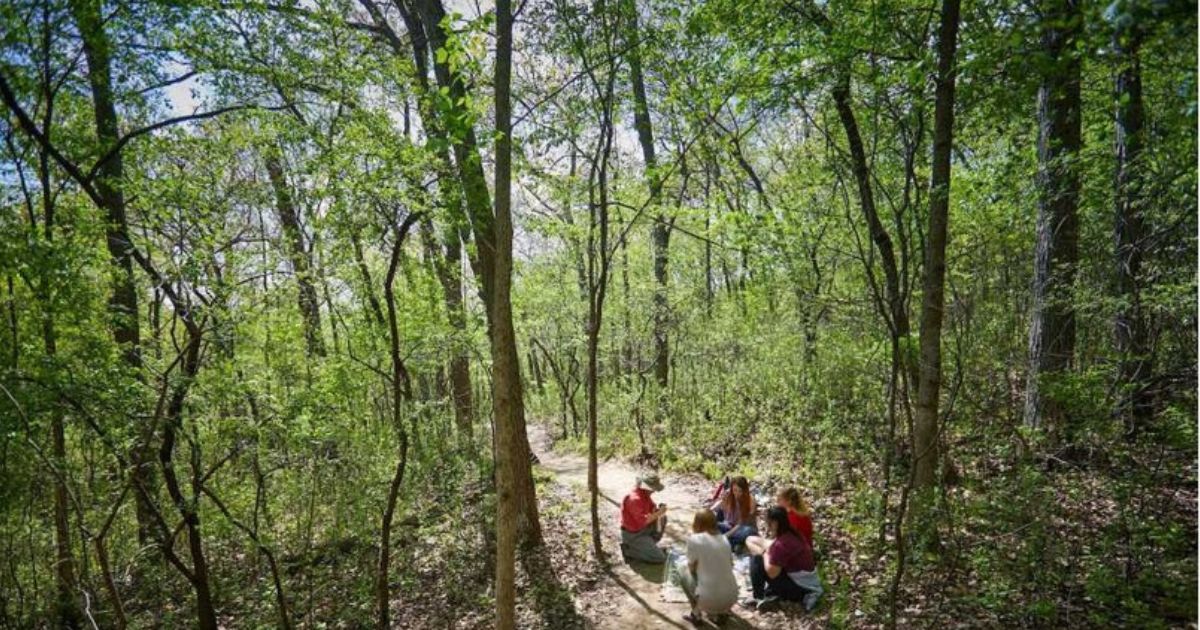In a groundbreaking study conducted by researchers at the University of Wisconsin-La Crosse, the therapeutic benefits of nature immersion, specifically through a practice known as forest bathing, have been unveiled as a powerful remedy for improving children’s mental health.
The study, led by Associate Professor Namyun Kil from UW-La Crosse’s Recreation Management & Recreation Therapy department, sheds light on the positive impact of forest bathing. The study shares the effect of guided forest therapy on a group of children aged 9 to 14 who grappled with mental health challenges such as anxiety and depression.
Unveiling the Impact of Forest Bathing
During the summer of 2019, a dozen children were taken to a forest in La Crosse to participate in guided forest therapy. The immersive experience aimed to explore the potential mental health benefits of slow, mindful immersion in nature, led by trained instructors. The participants, all dealing with mental health challenges, experienced tangible relief from their conditions.
According to Kil, the study’s author, the results were compelling. “There’s a significant decrease in blood pressure. Their energy level increased. Their concentration level increased, and the level of stress decreased,” he stated.
The findings, published in the International Journal of Mental Health Promotion Psychological and Physiological Health, present a compelling case for the therapeutic effects of forest bathing.
Nature’s Prescription for Mental Health
The study’s outcomes advocate for a paradigm shift in addressing mental health challenges in children. Kil advocates for parents to consider nature as a prescription for their children’s well-being, especially those facing conditions like attention deficit hyperactivity disorder (ADHD). “Even medical doctors prescribe the nature connection, not the medicine,” Kil asserted, emphasizing the importance of incorporating nature into holistic mental health approaches.
Expanding the Scope: Ongoing Studies
Buoyed by the success of the study, Kil is spearheading two ongoing research initiatives. One explores the potential benefits of forest bathing for military veterans grappling with post-traumatic stress disorder (PTSD), while the other investigates whether forest bathing surpasses a brisk walk in nature for physical health benefits.
Forest Therapy Guide Supports Study’s Findings
Forest therapy guide Kate Bast, owner of Shinrin-yoku Madison, concurs with the study’s outcomes, noting that forest bathing supports other international studies showcasing health benefits, such as lowered blood pressure and enhanced relaxation. Describing the experience, Bast highlighted how participants “loosen up,” softening shoulder muscles and embracing a slower pace.
She likened the role of a forest therapy guide to that of a yoga instructor, managing various aspects of the walk and creating a safe space for participants to connect with nature.
Shinrin-yoku: Connecting with Nature, Learning to Be Present
Shinrin-yoku, originating in Japan in the 1980s, involves a deliberate, mindful connection with nature. Bast emphasized that while individuals could visit the forest independently, having a forest therapy guide provides a structured and guided experience.
“It’s also learning how to be in nature in this particular way. Going silently, going slowly, learning how to connect and exist in the present moment and notice what’s going on,” Bast explained.
Pandemic Impact: Nature Connection in Challenging Times
Kate Bast’s business, initiated in April 2019, experienced a surge in interest during the COVID-19 pandemic. As people sought solace in nature during challenging times, forest bathing provided both a natural and social connection.
Bast observed an increase in the demand for walks as individuals recognized the dual benefits of enjoying nature and fostering social connections.
In conclusion, the UW-La Crosse study opens a new chapter in understanding the profound impact of nature, specifically forest bathing, on children’s mental health. As the evidence grows, the call to integrate nature into mental health strategies becomes louder, offering a holistic and accessible approach to well-being.








Leave a Reply
You must be logged in to post a comment.